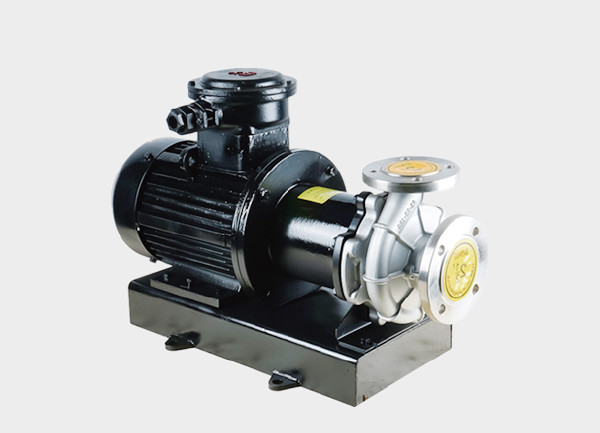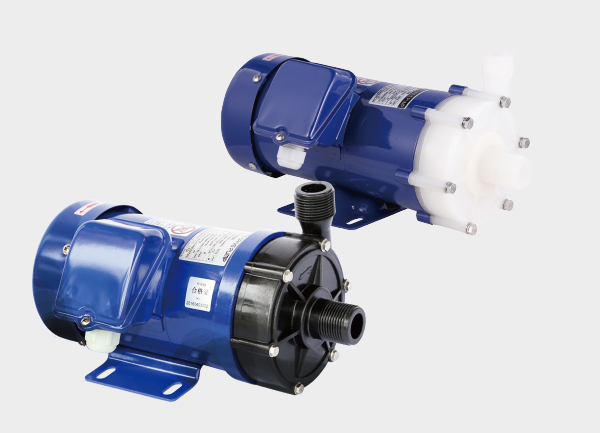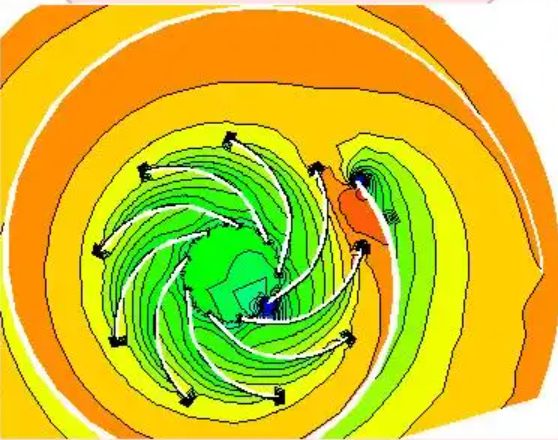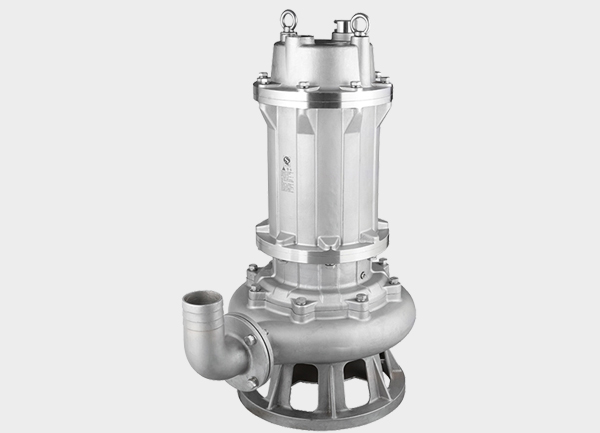A magnetically driven centrifugal pump (commonly called a magnetic pump) is an advanced upgrade of the conventional centrifugal pump, based on non-contact magnetic coupling transmission technology. Its greatest advantage lies in solving the long-standing problem of mechanical seal leakage, making it indispensable for handling hazardous or high-value fluids. With its combination of engineering practicality and technical innovation, magnetic pumps have become a key solution in modern industries.
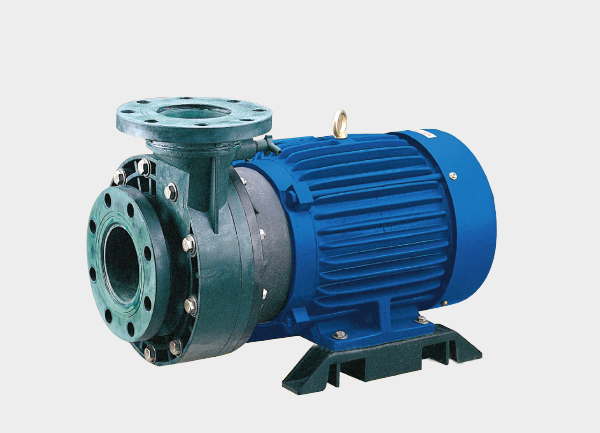
1. Core Working Principle: From Shaft Drive to Magnetic Drive
Traditional centrifugal pumps rely on direct mechanical transmission: motor shaft → mechanical seal → pump shaft → impeller. This design inevitably involves friction, seal wear, and leakage risks.
Magnetic pumps replace rigid shaft transmission with magnetic torque transmission, achieving non-contact power transfer. The process can be broken down into three stages:
Power Input: The motor drives the outer magnetic rotor (with permanent magnets, located outside the containment shell), generating a rotating magnetic field.
Magnetic Coupling: This magnetic field penetrates the non-magnetic containment shell, inducing torque on the inner magnetic rotor (rigidly connected to the impeller), causing synchronous, non-contact rotation.
Fluid Delivery: The inner rotor drives the impeller, creating negative pressure at the pump inlet. Fluid is drawn in, accelerated through the impeller channels, and discharged at the outlet, completing the conversion of kinetic energy into pressure energy.
2. Key Components and Technical Features
The performance advantages of magnetic pumps are derived from their specialized structure and materials:
Magnetic Coupler
Materials: Outer rotor (NdFeB magnets), Inner rotor (SmCo magnets)
Function: Enables non-contact torque transfer, eliminating pump shaft penetration and preventing leakage at the source.
Containment Shell (Isolation Sleeve)
Materials: Hastelloy, titanium alloy, PTFE
Function: Separates the pumped medium from the motor/outer rotor, ensuring corrosion resistance and zero leakage.
Wetted Components (Pump Casing, Impeller, Guide Vanes)
Materials: 316L stainless steel, fluoroplastics (F46), silicon carbide
Function: Build the fluid channel, tailored for corrosive or hazardous liquids.
Sliding Bearings
Materials: Silicon carbide, resin-impregnated graphite
Function: Support the inner rotor and impeller, lubricated by the pumped medium itself, eliminating the need for oil lubrication and preventing contamination.
Core Technical Characteristics
Zero Emission, Zero Leakage: Fully sealed design with no mechanical seals or packing, meeting VOC emission and hazardous fluid handling standards.
Low Failure Rate & Long Service Life: No direct contact between rotors, eliminating shaft wear and seal friction; MTBF typically 30% longer than conventional pumps.
Wide Media Compatibility: Customizable wetted materials allow operation with high-temperature media (≤350 °C) and highly corrosive chemicals (e.g., nitric acid, HF, lithium electrolytes).
High Efficiency & Low Noise: Optimized hydraulic impellers reduce hydraulic losses, improving efficiency by 5–8% compared with standard pumps. No seal friction noise, vibration levels ≤4.5 mm/s.
3. Application Fields
Due to their leak-free and corrosion-resistant nature, magnetic pumps are widely adopted in industries where safety and environmental compliance are critical:
Chemical & Fine Chemicals: Transporting acids, alkalis, solvents (sulfuric acid, NaOH, methanol, vinyl chloride).
Pharmaceuticals & Food Industry: Handling drug solutions, vaccines, and additives under GMP standards, with oil-free self-lubrication preventing contamination.
New Energy & Semiconductors: Pumping lithium battery electrolytes and semiconductor cleaning fluids (HF acid), where ultra-high purity and corrosion resistance are essential.
Environmental Protection & Water Treatment: Wastewater with heavy metals, high-concentration organic waste, ensuring zero leakage and compliance with environmental regulations.
4. Professional Usage Guidelines (Avoiding Common Pitfalls)
No Dry Running: Dry operation causes sliding bearings to overheat (up to 800 °C), leading to bearing failure, deformation, or magnet demagnetization. Always prime and vent the pump before startup.
Cavitation Control: Ensure Net Positive Suction Head Available (NPSHa) ≥ NPSHr + 0.5 m to prevent cavitation damage to impellers and containment shells.
Prevent Magnet Demagnetization: Select magnets according to operating temperature—NdFeB ≤150 °C, SmCo ≤350 °C—to avoid loss of magnetic torque.
Fluid Limitations: Standard magnetic pumps handle viscosities ≤200 cSt and clean liquids. For fluids with particles >0.1 mm, use filters to protect bearings and rotors.
5. Technical Limitations
Torque Limitations: For high viscosity or high head applications, magnetic torque may be insufficient, leading to “magnetic slip.” Larger or higher-grade magnets may be required.
Higher Initial Cost: Rare-earth magnets and corrosion-resistant alloys raise purchase costs (20–50% higher than standard pumps), though long-term OPEX is lower due to minimal maintenance.
Not for Extreme Media: Unsuitable for fluids with viscosity >500 cSt or solid content >5%. In such cases, shielded pumps or specially designed high-viscosity magnetic pumps are recommended.



